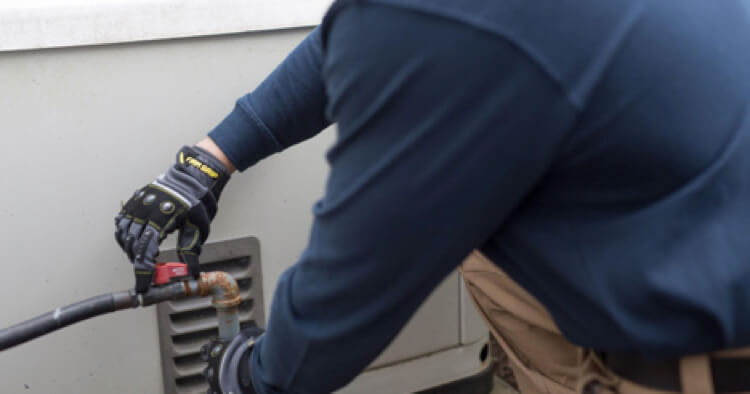How to thaw frozen pipes

Even with the best laid plans to winterize your home plumbing system, sometimes pipes still freeze over. And sometimes, they burst. And then the panic builds and causes the emotions to burst. (Sound familiar?)
As my science-loving daughter explained to me, it has to do with changing states of matter. (Yep, she’s a smarty pants.) As the frozen water expands, the pressure can build from 40 PSI to 40,000 PSI. Ordinary pipes are no match for this explosive stress and they’ll rupture.
The worst-case scenario
You may not notice you have a burst pipe until it starts thawing. Then, water will start flooding straight into your home at a rate of hundreds of gallons per hour, according to The Spruce. A wintertime flood can only ever lead to extensive water damage, costly home repairs and buckets of bitter tears.
Identifying a frozen pipe
The most vulnerable pipes are those in an unheated crawl space, basement or garage, and those within external walls. This includes pipes in closets and cabinets and those near outdoor hose hookups. Exposed pipes are also susceptible. Basically, any pipe with some proximity to the great frozen tundra of the outside world is at risk of freezing.
If you can successfully thaw out your frozen pipe before it bursts, you’ll save yourself endless trouble and strife. When the temperatures drop, here are some signs to look for:
- Nothing comes out of the tap when you turn it on.
- The water pressure is significantly reduced.
- Your toilet bowl doesn’t refill after you flush it.
- Frost appears on the outside of the pipe.
- There’s a bulge in the pipe.
Learn More About Home Repair Plans Near You
If you notice one or more of these things, chances are your pipes are frozen and you need to take action — immediately.
What to do
Upon spotting a frozen pipe, keep the surrounding area as warm as possible. Turn up the thermostat to about 70 degrees. To help the heat circulate and stay in, leave cabinet doors open so the warmth reaches the plumbing system and keep your windows and garage door closed.
Direct a space heater (though always use safety precautions) or infrared lamp towards exposed pipes and those behind walls. You can also blow a hot hair dryer towards the pipes to speed up the thawing process. (But never, ever use an exposed flame.) If the situation is really dire, consider slicing out a section of drywall to expose the pipe.
Focus your efforts on the part of the pipe closest to the faucet so that the melting water has somewhere to go. Keep a stream of cold water flowing out of the faucet. If the pipes are frozen, the water flow will be noticeably reduced. As they thaw out, you’ll notice the flow pick up.
If you expect the cold snap to pass, you may be able to resolve the problem on your own. However, if the weather forecast shows that Jack Frost is going to stick around like an unwanted guest, you’d be best served by enlisting the help of an experienced plumber.
Long-term solutions
The crisis may be averted, but you should still take preventative measures with these habits and home improvements to make sure your pipes don’t freeze again:
- Cover the pipes with pipe insulation.
- Insulate vulnerable rooms like the basement and crawl spaces.
- Keep your thermostat at 70 degrees Fahrenheit during the colder months.
- Consider having electric heat cables installed.
Being prepared for pipe and plumbing emergencies is always a good idea. Get help with the costs and services associated with these types of repairs with a variety of affordable home repair plans from HomeServe.




